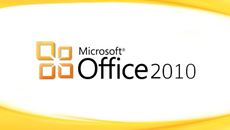- Delivery Method Online
- Professional Certificate
- 24hrs Suggested Study Time
- 3 Months Access
- Tutor Support
- Study On Any Device
- 5665 Students
Starting a Nonprofit

Industry veteran shows you how to take a nonprofit business from vision to reality.
Do you dream of starting and running your very own nonprofit? This highly interactive, hands-on course is ideal for anyone who is interested in forming a new nonprofit, converting an informal group to tax-exempt status, or reorganizing an existing organisation. It provides practical how-to information about incorporation, organisation, and other issues pertinent to anyone involved with a nonprofit start-up.
No matter what level of experience you have, you're sure to find this unique course to be a valuable source of useful strategies and industry-specific advice that you can put to immediate use. This clear and enjoyable course, taught by an industry veteran, will answer your every question, providing detailed instructions describing every step you'll need to take to establish and operate a successful nonprofit.
You'll learn how to incorporate, select a board of directors, write bylaws, craft a mission statement, obtain tax-exempt status, develop a budget, create a marketing plan, explore fundraising options, and more.
The course is also supplemented with useful checklists, worksheets, reading lists, and field trips to a wide variety of online resources. By the time you graduate, you will be well-prepared to meet the challenge of starting and operating a successful nonprofit.
Courses are delivered to you through expertly executed lessons, online instruction and interaction with like-minded students. Our courses are designed to deliver all of the benefits of studying in a classroom whilst giving you the flexibility to study at a time and place to suit your needs. You can access your classroom 24/7 from any device with an internet connection.
This course has a 3 month duration. You'll complete comprehensive lessons, quizzes and assignments before submitting your final exam at the end of the course to achieve your certificate. Courses must be completed within the 3 month access period.

Linda Kissam
Linda Kissam is an eighteen-year veteran in the nonprofit management field. She has managed both 501 (c)(3) and 501 (c)(6) organisations and currently owns her own consulting company. She has taught both in the public and private sectors. A season... Read more
Read Linda Kissam's ProfileFrequently Asked Questions
What people are saying about our courses
The Learning Environment
From the moment that you enrol in the Starting a Nonprofit you will become an integral part of our learning community. You'll find yourself with the freedom to learn at a speed that suits you, on any device, from anywhere in the world. Achieving your career goals no longer has to mean compromising family and work commitments.
Our Values
Learn At Your Own Pace
We believe in personalised learning. That's why we provide all the tools and support you need to succeed at your own pace. With flexible learning, you'll stay motivated and retain more information. Plus, you can balance your studies with work and family commitments to make your dreams a reality.
We Won't Break The Bank
Education should be accessible to anyone who wants to learn. That's why we offer some of the most competitive prices in the industry with payments plans for just $25 per week. Investing in your future is a smart choice and doesn’t have to break the bank.
Industry-Led Courses
There's no better way to learn than from experts with years of experience in your field. That's why each of our 200+ industry-led courses are designed to give you a real-life perspective on your industry. With our expert mentors, you'll learn from people who have a wealth of knowledge and experience, and who are passionate about sharing it with you.
Get The Personal Support You Deserve
At Vibe Learning, we're real people who are dedicated to providing you with personal support every step of the way. Our industry experts are not only professional and knowledgeable but also incredibly passionate about sharing their expertise with you. With their guidance, you'll gain invaluable insights and practical knowledge to help you succeed.
Still looking?
Check out the following courses related to Starting a Nonprofit:




